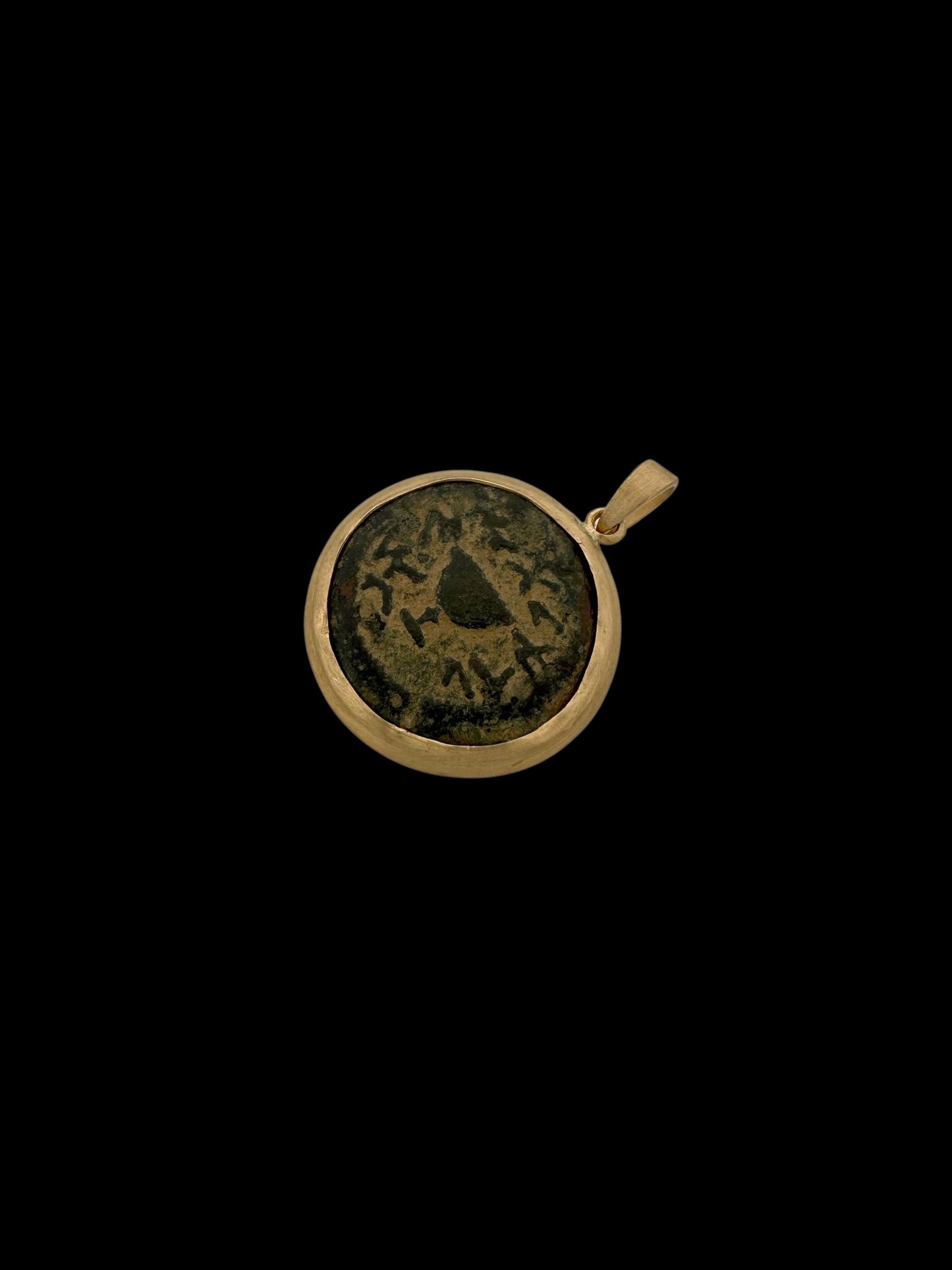



Ancient One-eighth bronze shekel of the Jewish Revolt Coin set in 14k Gold Pendant
Ancient One-eighth bronze shekel of the Jewish Revolt Coin set in 14k Gold Pendant

This dainty 14k brushed gold frame is handmade to fit exactly around the coin in its original shape housing an authentic Ancient One-eighth bronze shekel of the Jewish Revolt Coin dating to the 4th year of the revolt (69-70 C.E) Minted in Jerusalem & Found in Jerusalem Comes with a Lifetime Certificate of Authenticity Authorized Antiquities Dealer by the Israel Antiquities Authority
Couldn't load pickup availability




-
#1 Choice for Holy Land Jewelry
Our quality is like no other - luxurious! -
Money-back guarantee
To ensure your satisfaction - or your money back. -
Worldwide Shipping
From the heart of Jerusalem to your doorstep!
Product Details
Pendant Size: 2.9 cm 1.2" Inches X 2.2 cm 0.87" Inch
Total Weight: 7.8 Grams.
Obverse: Chalice (Omer Cup); Hebrew Inscription, (To the Redemption of Zion)
Reverse: Lulav flanked by an etrog on either side; surrounded by Hebrew inscription (Year Four)
In the Revolt's first year (66–67 CE), the Jews minted only silver coins, which were struck from the Temple's store of silver. These coins replaced the Tyrian shekel, which had previously been used to pay the Temple tax. The newly minted silver coins included shekels, half-shekels, and quarter-shekels, each being labelled with the year of minting and their denomination.
During the second (67–68 CE) and third (68–69 CE) years of the Revolt bronze prutah coins were issued, and in the fourth year of the revolt (69–70 CE) three large sizes of bronze coins were minted, possibly because the supplies of Temple silver were diminishing. It is believed by numismatists that these coins were fractions of a shekel. The smaller of these coins also has the depiction of a chalice, together with symbols of the Jewish harvest festival of Sukkot, a lulav and etrog, and the date and inscription "For the Redemption of Zion". This coin is usually called an 'eighth', probably being an eighth of a shekel. There is broad scholarly agreement that coins issued by the Judean government during the Revolt use an archaic Hebrew script and Jewish symbols including pomegranate buds, lulavs, etrogs, and phrases including "Shekel of Israel," and "The Freedom of Zion" (חרות ציון Herut Zion,) as political statements intended to rally support for independence.




